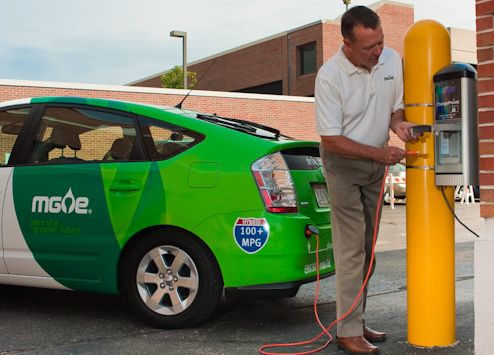Once in a while, you get an announcement that looks interesting but requires ... ummmmm ... some interpretation.
During the barrage of car launches, interviews, press releases, and general running around that comprised media days at the recent Los Angeles Auto Show, we got a press release with the following subject line:
Nissan Selects Coulomb Technologies’ ChargePoint Network to Provide Complete Public Electric Vehicle Charging Infrastructure
Hmmmm. So what does this mean exactly?
We happened to chat with Mark Perry, Nissan America's director of product planning, yesterday--so we asked him.
The answer: Nissan found it a challenge to keep up with the rapidly growing network of public charging stations for plug-in electric cars.
So the company looked at all the outlets that maintained up-to-date lists of their own, and contracted out the job of providing that data for the Leaf website to ChargePoint, a unit of charging-station maker Coulomb Technologies.
The Nissan Leaf website now has what the companies call "the most comprehensive [list] of stations in the United States." It shows, they claim, every charging point that has been documented by the U.S. Department of Energy.

Coulomb electric-car charger, Madison, WI
That list naturally includes every location on the ChargePoint network of charging stations, but both Coulomb and Nissan assure users that the listing is entirely neutral, and doesn't favor ChargePoint's locations in any way.
Among the data that will be offered is real-time availability of a particular charging station, when that information is available.
That way, if an electric-car driver is getting low on charge, the nearest station can be displayed--and in some cases, the system will also indicate whether it's being used already.
As installation of public charging points continues apace, we expect more companies to need this data and to adopt similar solutions.
Among the competitors to Coulomb's map: Google, which has incorporated electric-car charging points into its mapping--although right now it's buried deep in the DoE website as part of the Alternative Fuels and Advanced Vehicles Data Center.
+++++++++++













